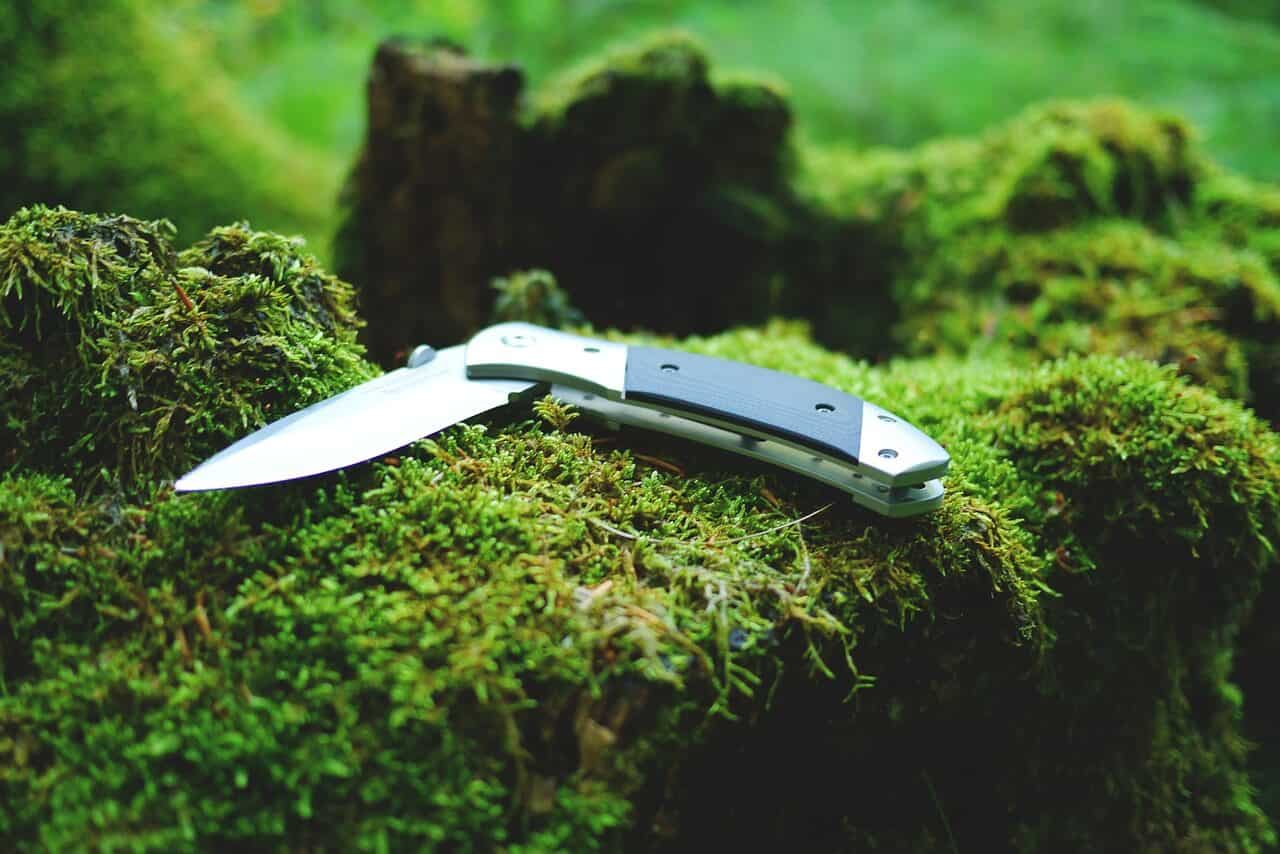For people who don’t usually carry blades around, a pocket knife may seem like it’s not a requirement. Some might even consider it dangerous or suspicious for people to carry pocket or outdoor knives, and while that may be true, there are plenty of benefits to carrying a knife. A knife is not just a weapon – it can be used for anything, from simple things like slicing fruits while you’re traveling, to survival or defense in an emergency.
Pocket knives are also generally durable. Even a cheap purchase can last quite a while if you take care of it properly. But if you neglect a pocket knife’s maintenance, then even the most expensive and high-quality blades can start to rust and end up failing you.
Taking care of your pocket knife is a very simple process. There are a few things to keep in mind about your pocket knife:
- It has to be sharp – of course, you’d want your knife to be sharp, or it won’t perform its main function.
- It has to be clean – if your knife isn’t dirt-free, its cutting ability can be reduced, and it may even be dangerous for you. If you accidentally cut yourself on a rusty blade, you’d be putting yourself at serious risk.
- It has to be lubed – if your pocket knife isn’t properly lubricated, it may not open and close properly, which is annoying at best. And it can also be life-threatening in the worst-case scenario.
- It has to be tight – if your knife isn’t tight, the blade may not stay in one place, which is again, dangerous and can cause problems.
Maintaining your knife is easy, as long as you can recognize when it needs cleaning and how to perform the cleaning.
How Do You Know Your Knife Needs Cleaning?
The most obvious sign that your pocket knife needs to be cleaned is visible dirt accumulation on the tool. However, you shouldn’t look only at the blade to determine whether the knife needs cleaning. When inspecting your pocket knife for maintenance, it is a good idea to check the blade to see if it has collected rust or grime.
Second, check the pivot point to ensure it doesn’t have dirt. And examine the metal parts to make certain there is no rust anywhere. Also, ensure that the knife opens and closes smoothly without you needing to apply pressure because a dirty pivot point can affect the opening and closing functions of pocket knives.
Though cleaning and maintaining a pocket knife is easy, regular cleaning can be a messy task, so pick out a good space where you can spread out all your materials. Some of these materials can include oils and lubricants which are toxic. So you would want to avoid spaces that come in contact with food, or that you spend time around regularly, such as your kitchen counter or dinner table.
How to Clean Pocket Knife
Materials You Need to Clean Your Knife
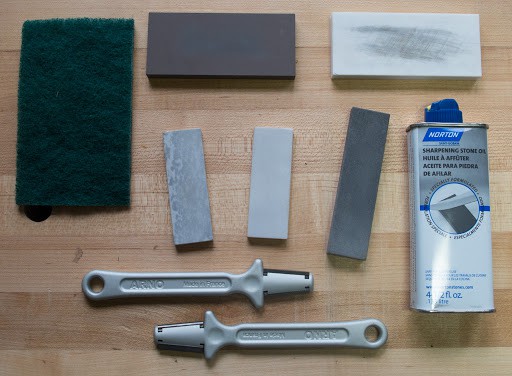
There are some things that you’ll have to keep with you before you start the cleaning process. Some of these are absolutely necessary, while there can be alternatives for others. Use your best judgment, depending on the knife itself and the amount of accumulated dirt.
Regardless of what you choose, make sure that your main focus is the life of the blade. Don’t end up skipping out on something out of convenience, only for it to have a negative effect on your blade later on.
So, here’re are the materials you’ll need to remove dirt and grime from a pocket knife.
Scour Pads
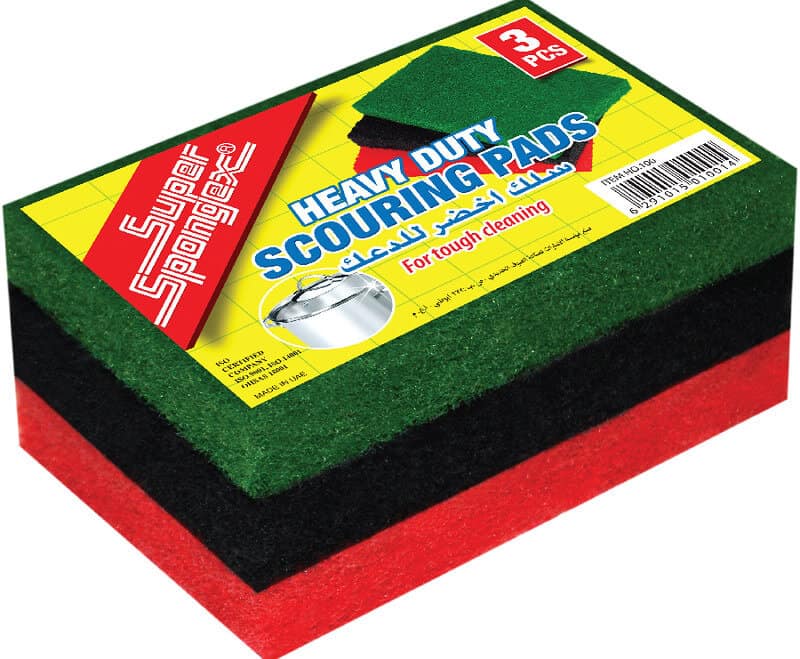
To scrub the rust and dirt off your blade, you’ll need a good scrubbing pad. Find one that’s non-abrasive and doesn’t result in scratches. Don’t settle for any alternatives such as steel wool, which can strip the metal from the blade and shorten the blade’s life. Alternatively, you can also use fine sandpaper in place of a scouring pad.
Cleaning Brushes
While a scouring pad will get a good chunk of the dirt and rust off, it’s likely that you’ll miss out on some particularly stubborn spots, especially around the pivot point or in deeper corners.
To get to places you missed, you would need a good cleaning brush – again, this should be non-abrasive. A simpler alternative is a regular old toothbrush. But if your blade is very rusty, consider getting a brass-bristle brush. However, be careful that you don’t scrub too strongly, since scrubbing metal with metal is always a risky choice.
Penetrating Oil
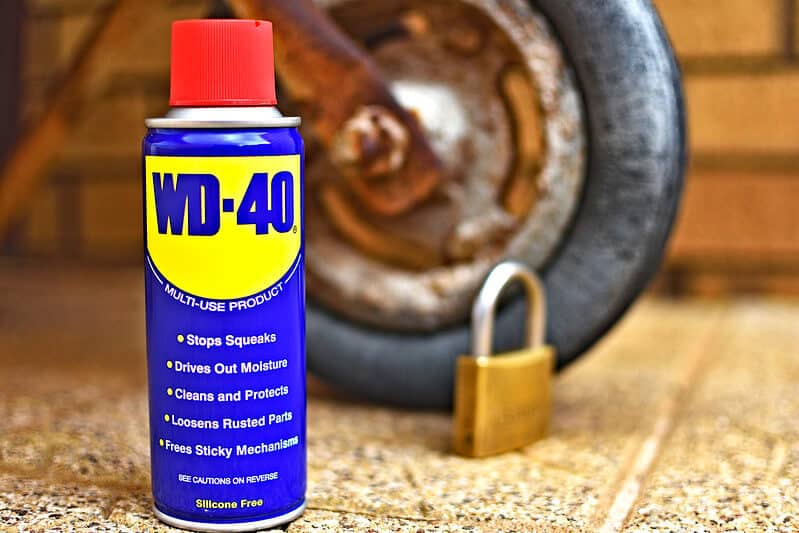
Penetrating oil like WD 40 lubricants are made specifically to clean out rust and lubricate different parts of knives, including the knife’s handle. Alternatively, you can use vegetable oil and even machine oil for the purpose. It becomes a necessity depending on the state of your knife. Use a soft and light cloth or cotton swab to apply the oil.
It may not be optional for some knives and necessary for others. And for knives that are relatively clean, using warm water with soap can do the trick just as well.
Soft Cloth
Wiping all the excess oil and gunk after you’re done cleaning would need a soft cloth. Technically you can use a regular old towel or paper towels without causing any real damage to your blade. But it may not clean out your knife as effectively as a proper polishing cloth would. Whichever cloth you choose, make sure it’s non-abrasive.
Clearing the Pivot Point of Your Pocket Knife
The pivot point is usually overlooked when clearing direct and grime out of knives but is an important point to consider. You’d want to remove any kind of sand, dust, and grime from the turning point because if left to collect, these substances can keep the knife from turning smoothly.
To clean the pivot, first, you’d want to open the blade all the way. Do not disassemble the blade – simply open it wide enough to make it easier to access the pivot point. There may be some lint stuck in there, which you can use a toothpick to remove. To get rid of dust and tiny particles, you can blow at the joint with compressed air, such as that used to clean out a computer.
If there’s any grime stuck on the knife after completing the first step, you may need to wash it out. Fill a pan with soapy, warm water, and dip the knife into it for a couple of minutes to remove the grime. Make sure you’re not using hot water, especially if it is a folding knife since this can damage the handle. After the gunk stuck on the pivot has been softened, you can use an old toothbrush to scrub at the part to be cleaned to get rid of the dirt.
Now you will have to rinse the stainless steel knife properly to get rid of the soapy water. Make sure to dry the knife thoroughly with a soft towel. If you leave it out to dry while it is wet, you may end up increasing the chances of it being rusted. Once the knife has been wiped dry, leave it out in the sun for a while so that any small traces of moisture that you couldn’t catch can also be eliminated and your knife can stay free of rust.
Cleaning a Rusted Pocket Knife Blade
A rusty blade is not pleasant to look at, let alone the challenge of using it! In fact, if the blade is very rusty, you may even be tempted to just buy a new one. However, there are multiple ways to clean a rusty pocket knife that can result in it looking brand new. Even small amounts of rust can be dangerous on your blade, so it is best to clean your blade properly whenever you can.
To clean a rusty blade, you can use any of the following:
- Baking soda
- Salt and lemon
- White vinegar
- Penetrating oil or lube
Using Baking Soda

If you’re using baking soda, all you have to do is mix together water and baking soda in appropriate amounts to make a paste. Use an old toothbrush to spread the paste over the blade, and let it sit for about an hour. Scrub the blade with a scrubbing pad for a couple of minutes before you wipe the paste off with a towel.
Using Salt and Lemon Juice
The acidity in lemon juice, combined with the abrasive effect of salt grains can be great at removing rust. Salt is a much gentler option than other abrasive substances because it doesn’t leave behind any scratches. All you need to do is spread salt and lemon juice on the blade and leave it in for about two hours before you scrub the rust off. Rinse the blade to get rid of the residue, and wipe it with a towel so it is dry.
Using Vinegar

Vinegar is one of the best materials to clean your knife blade. The only thing you have to do is soak the blade in the vinegar for a few minutes. Then wipe off the vinegar with a towel, and your knife should be rust-free!
Using Penetrating Oil
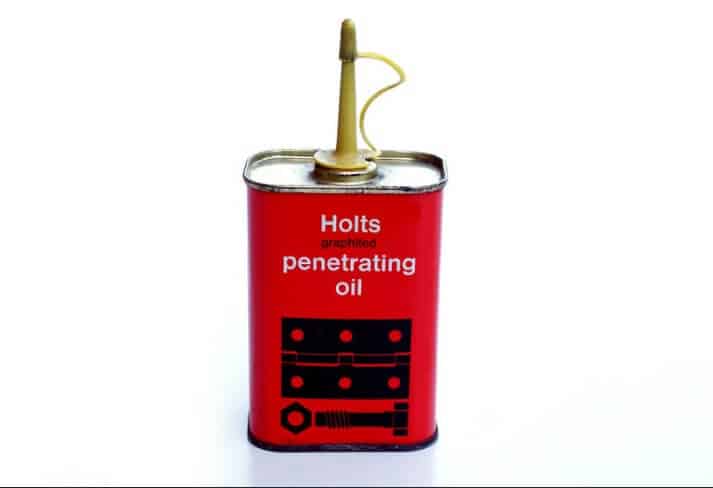
Penetrating oil is great for removing rust off many objects, though you should keep in mind that it is not the best for blades that are intended to cut food. For such knives, you may want to use edible oils instead.
Use a cotton swab to apply the oil to the blade and let it settle for a few minutes. Use fine sandpaper to scrub the rust, and wipe it away with a soft towel.
Many times, if the blade is very rusty, you may have to use two or more (or even all!) of these methods to fully clean out your knife. Whichever method you use, make it certain that you point the blade away from yourself when cleaning and that you are wearing rubber gloves to keep from accidentally cutting yourself. Also, ensure that the knife is dry after the application of the lubricant.
Preventing Rust
A better option than cleaning away rust is to prevent the rust from forming at all. Rusting occurs due to a chemical reaction on the surface of the blade that needs a wet surface to start.
Ensure that your knife blade is properly dried before you store the tool. Also, avoid keeping your knife in a sheath all the time (especially when you’re not traveling) since this can attract moisture and result in rusting.
Keep an eye out for any signs of rusting, and clean your blade on time. Lubricating regularly will prevent your knife from rusting.
If, after any of the cleaning processes, you find that there is discoloration or spotting on the blade, dab a bit of mineral oil on the spot and rub at it with a regular old eraser, and it should take care of the problem.
Disassembling Knives For Cleaning
While it may be tempting to disassemble your knife for cleaning, this may not always be a good idea. Also, there may be cases where you simply cannot clean your knife out without taking it apart. For example, if there are blood and hair stuck on it, and you need to use it to cut food, taking it apart is reasonable. By doing so, you’ll make the knife food safe.
However, there’s usually no real need to disassemble a knife to maintain it, since you can get to all the smaller corners using some simple tools without much difficulty.
That said, some knife owners may enjoy the experience of disassembling and maintaining their knives. Disassembling a knife may also be a valuable skill if you want to understand how your knife works (or how others work!).
If you happen to be taking your pocket knife apart for any reason, then do it in a place where you don’t lose any of the parts. Also, be certain that you know how to assemble the different parts of the knife because even a small mistake can result in your blade becoming unusable.
Other Tips to Maintain Your Pocket Knives
Cleaning your knife is important, but other parts of knife maintenance such as sharpening and tightening are equally necessary, although they are not as visible. There are plenty of different ways to sharpen knives, but you don’t necessarily need to be technical to accomplish the results.
There are many knife sharpening kits that you can use on your own to sharpen your knives. However, you should first look up how to go about it though, if you want your knife to work properly. If you’d rather not do it yourself, there are plenty of professional knife sharpening services that can do it for you.
Also, make it certain that your blade is kept tight at all times. Over time, some screws may come loose. This can result in hindered functionality, which may not seem like much sometimes, but can cause serious problems in emergencies. When cleaning your knives, it’s a good idea to tighten your knives as well and keep them secure. It’s a good idea to apply a seal over the screws to prevent corrosion.
Final Thoughts
Pocket knives, as we mentioned before, can be very useful – from opening packages to defending yourself in dire situations – there are many instances you may need a pocket knife. But any knife will be useful only if it is properly maintained and cared for so that whenever you need to use it, it does its job well. With just a little bit of effort and regular maintenance, you can rest assured that your knife is kept well and functional and that you’re never faced with a situation where it fails you.

Gary Portman is the founder and main author of Knivesadvice.com. With his extensive knowledge and experience, he is committed to assisting people in choosing the perfect knife for their needs. Through his articles, Gary shares valuable insights on various aspects of knives. With his expertise, readers can make informed decisions and find a knife that is tailored to their preferences and requirements. You can find more info about Gary here.

